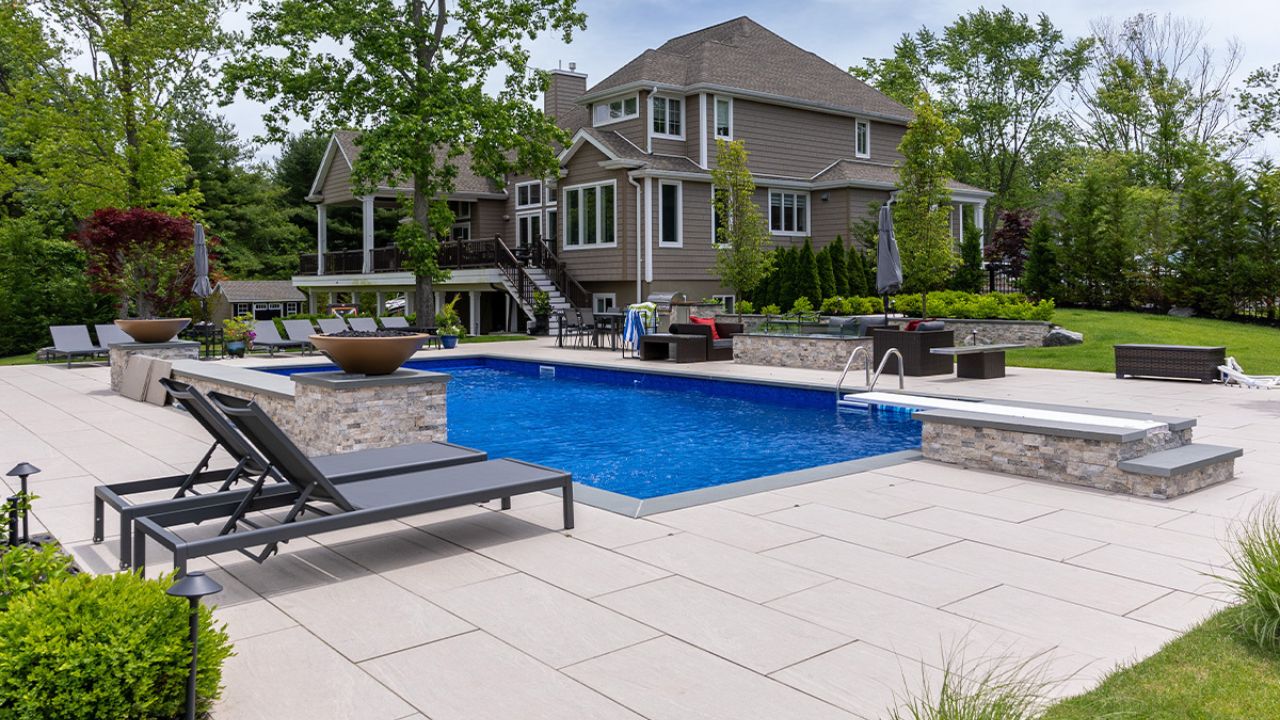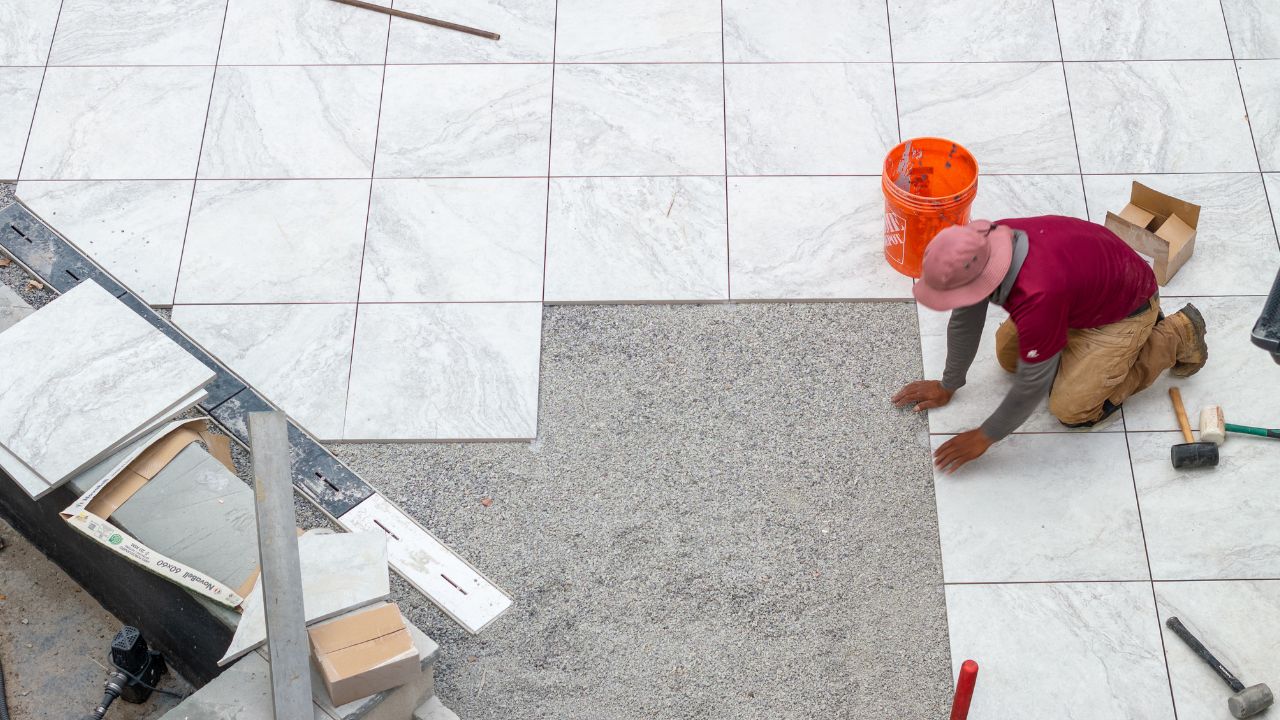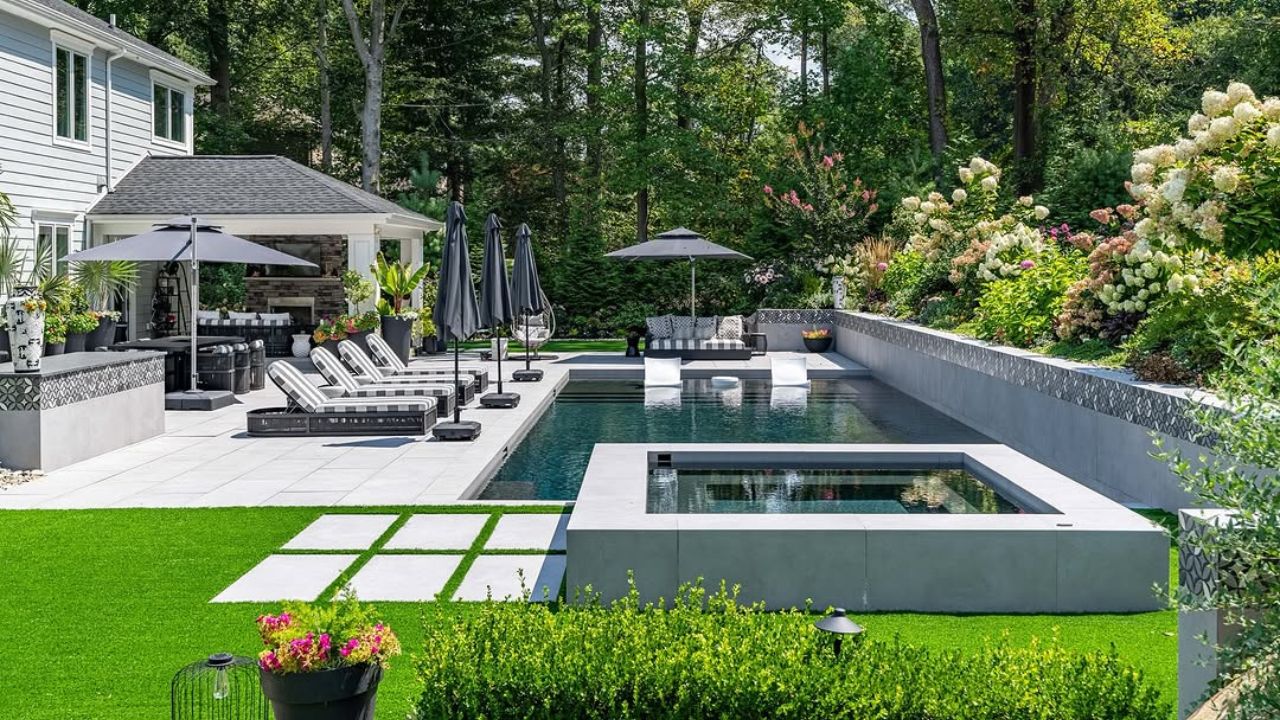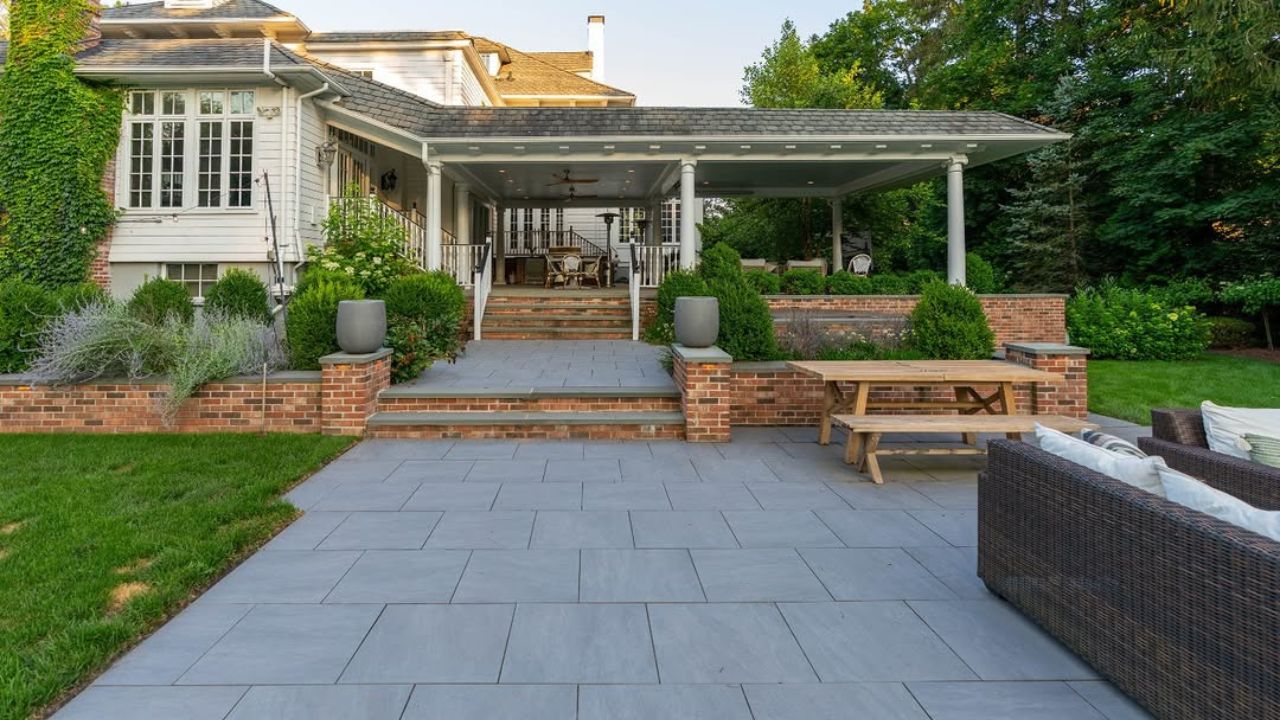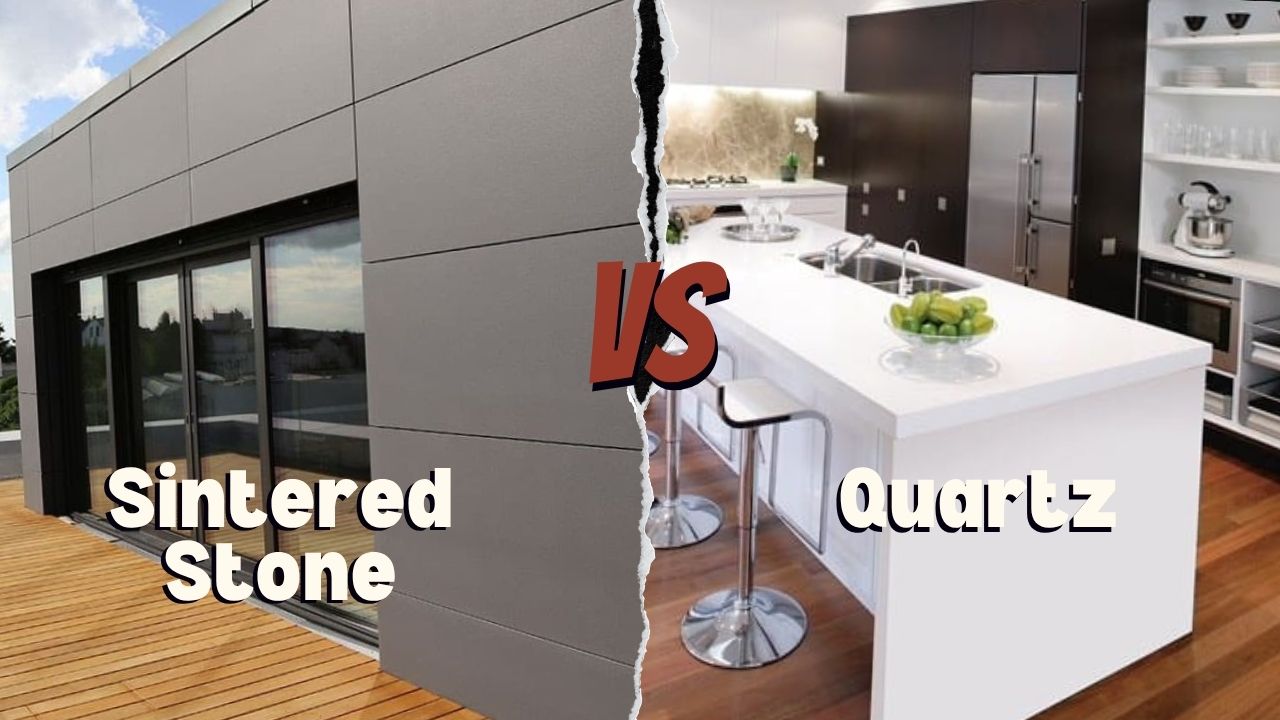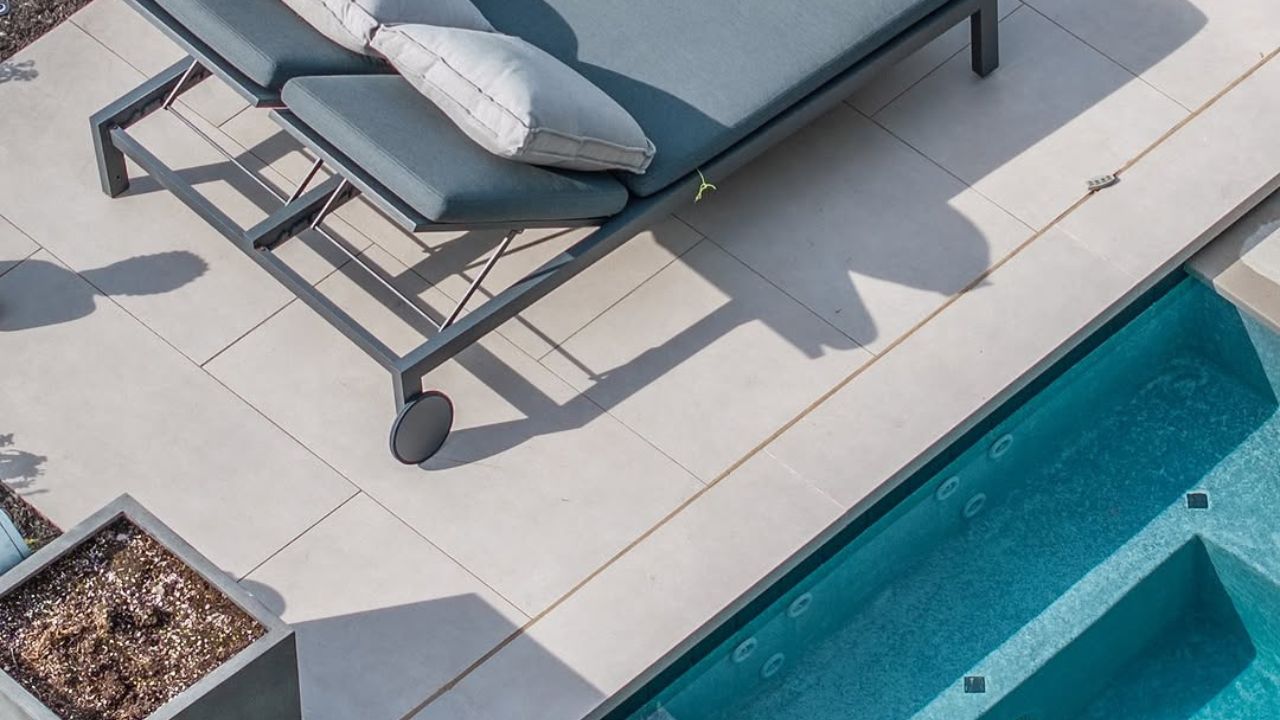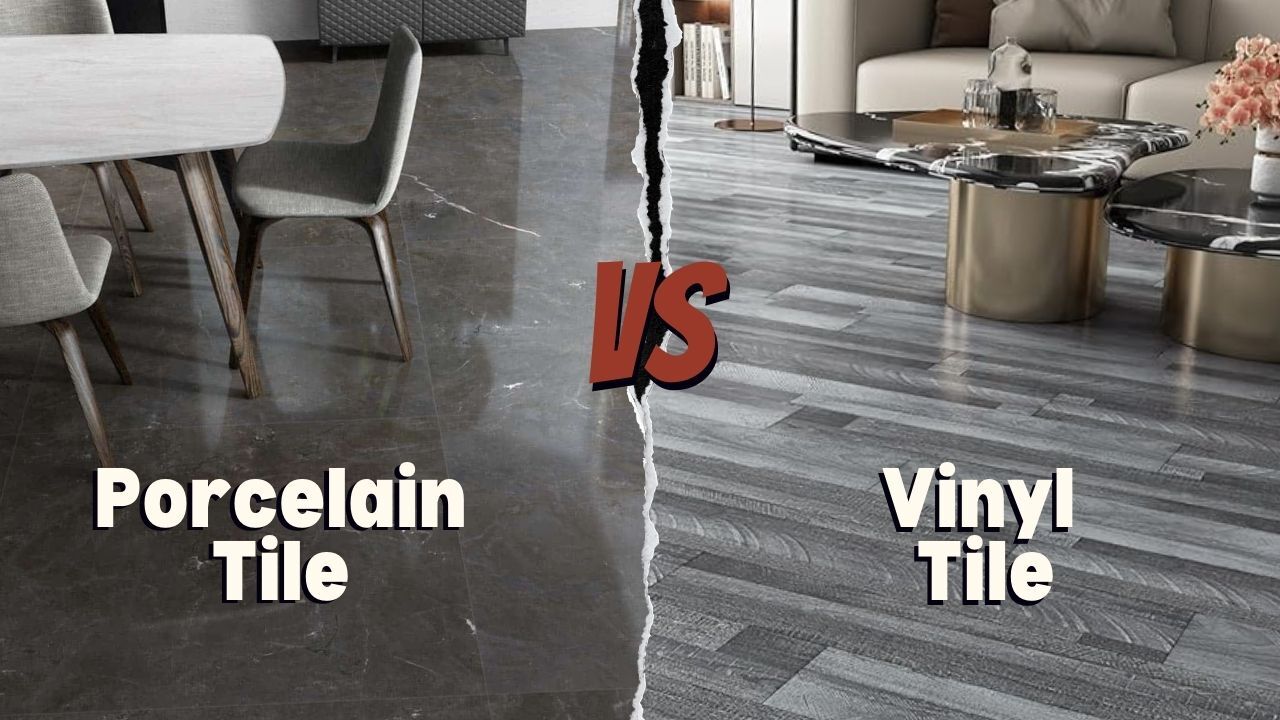When choosing material for a walkway, you should look for comfort, durability, and safety. It features all three. It doesn’t crack under pressure and doesn’t become slippery when wet, and the soft, earthy tones complement any environment and enhance aesthetic appeal.
It performs without fuss. And it ages well. Whether you’re a homeowner designing a patio path or an architect planning public walkways, it offers stability without compromise.
Top 6 Reasons To Choose Sandstone For Walkways
Sandstone Walkways in any setting should be both functional and aesthetically pleasing. Considering it is an ideal choice, and here is why!
Durability
It is a natural stone that is resistant to scratches and daily wear. It can also stay unaffected under harsh weather conditions and heavy foot traffic. This makes it a great option for outdoor applications like walkways and patios.
Aesthetic Versatility
It features a wide range of colors and tones, which means it can be found to match any outdoor design and architectural theme. From warm beige to dark greys and blues, they can be found in any look to complement the entire look. Also, they come in a variety of finishes so that you can choose according to your requirements.
Budget Friendly
Unlike other natural stone options like marble or limestone, sandstone for walkways can be a great budget-friendly choice. This stone paving choice can last longer, which means fewer repairs over time. This will result in a long-term investment for your outdoors.
Slip Resistance
It has a naturally textured surface. This is why it offers better traction, which makes it a slip-resistant material for wet areas like pools and walkways. This will ensure a safe walkway material to walk on, even in wet conditions such as rain.
Versatile
It is also a versatile material with lots of outdoor applications. This natural stone is great for patios, walkways, and driveways, and it can also be used for wall cladding or to build outdoor fireplaces.
Eco-Friendly
This natural stone is an eco-friendly building material. There are no chemicals or treatments involved in the production of natural stone. It is also non-toxic, so it’s safe for animals and plants.
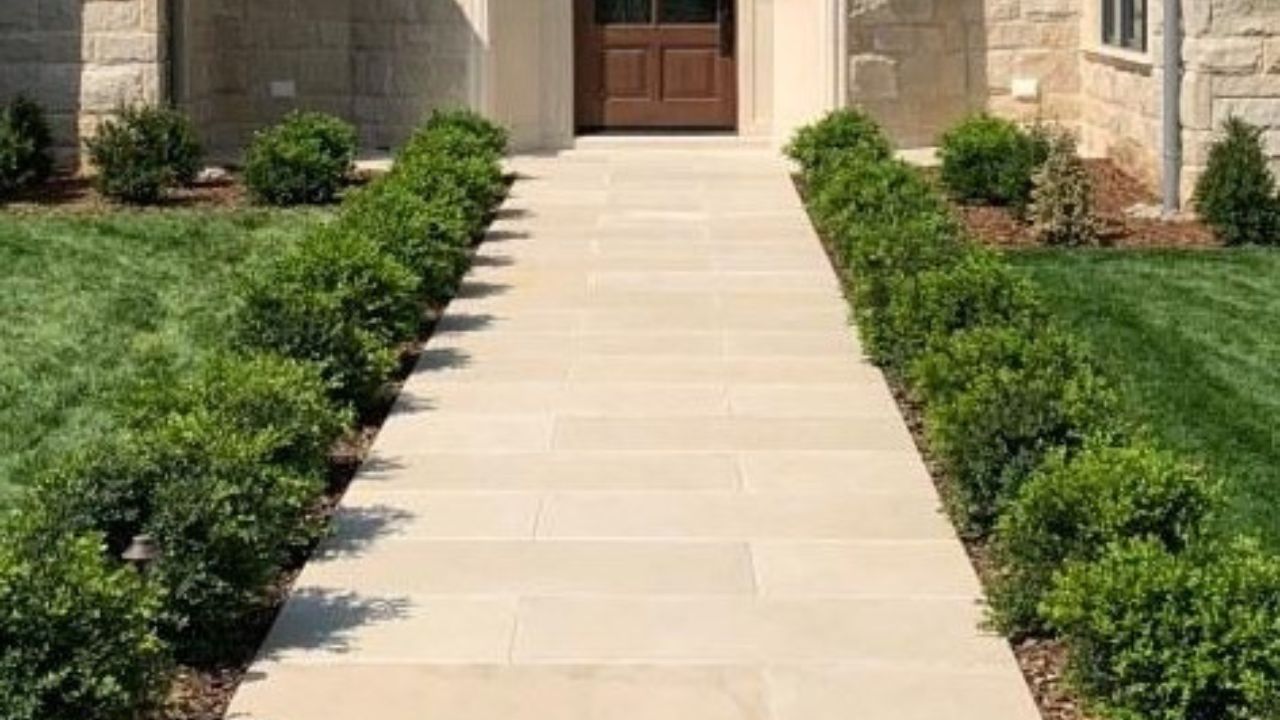
Sandstone Vs Concrete Vs Granite
Sandstone is a popular choice as a paving material, but there are other materials, including concrete and granite. In the following table, we are comparing sandstone with both so you know how sandstone is a perfect choice for walkways.
| Feature | Sandstone | Concrete | Granite |
| Texture | Natural, grippy | Smooth or broomed | Polished or flamed |
| Heat Retention | Low | High | High |
| Color Variety | Warm, earthy | Gray, dyed | Dark, cool |
| Installation Ease | Medium | Easy | Complex |
| Cost (2025 avg/ft²) | Medium | Low | High |
Concrete is easy to pour and shape, but it cracks with time and fades under UV light.
Granite slabs offer extreme durability but at a premium price, and their polished surface gets slick, which retains heat in summer.
This paving material sits in the middle. It’s more natural than concrete, less costly than granite, and easier to replace piece by piece.
What Makes Sandstone Durable?
It forms over millions of years as sand compacts and bonds. This structure makes it a solid but workable form. This is why these walkway stones do not crack under heavy foot traffic or harsh weather conditions. Their natural beauty can tolerate seasonal shifts by expanding and contracting without breaking.
Softer stones like marble pavers soften with time in an outdoor space, but well-quarried stones remain dense. A natural stone supplier like NT Paver sources sandstone that meets strength ratings suitable for pedestrian use. That means the stone won’t erode under heavy steps, rolling carts, or even small machinery.
These walkway edges can chip if not sealed or installed well. But with proper cutting and bedding, it stays secure and flat for decades.
How Does Sandstone Perform in Wet or Hot Weather?
It has a breathable surface. Unlike polished stone or poured concrete pavers, it absorbs a small amount of water and releases it gradually. This results in fewer puddles, lower water runoff, and fewer slip hazards.
Its natural grain still grips shoes and feet in wet conditions. The surface texture helps drain water across the tile face. Many landscape architects choose it for pool walkways and garden paths where water can collect.
In hot climates, this natural stone paver stays cooler under direct sun compared to concrete or granite. That makes it ideal for barefoot zones, especially in family yards or spa walkways.
Why is Sandstone Safe for Walkways?
Yes. Sandstone pavers are ideal for designing safe walkways. The textured surface provides a better grip for walking, which enhances the safety of outdoor areas prone to wet conditions. The cleft or honed finish offers texture. It doesn’t polish to a slick surface. Even during rain or irrigation, it keeps its grip.
These walkways are often a choice for public installation as safety standards often require an antislip surface. Also, there can be bullnose or eased edge. This softens the transition between pieces and avoids sharp corners, which is especially helpful for high-traffic zones and accessible paths.
What Styles and Finishes Does Sandstone Offer?
It comes in different finishes and styles that one can choose according to their project requirements.
Natural cleft
This is a naturally rough-textured surface that features a layered surface. It creates a rustic look and is often used for garden pathways.
Honed
This is a smooth surface, but it still has a matte feel to it. This surface is ideal for indoor flooring and wall cladding.
Tumbled
This provides a weathered look to the stone with softened corners. This look is created artificially and often chosen to create a rustic look that gives the space a look and personality.
Brushed
It is a fine-textured surface with a light grain. This surface is suitable for both indoor and outdoor applications.
Sandblasted
It is a slightly rough surface created by using sand. This offers great resistance against slip, which is why well well-suited for pool areas and patios.
Flamed
This surface is the result of exposing the stone surface to heat, which creates a rugged, textured surface. It is an ideal choice for outdoor applications due to its high slip resistance.
These finishes let you match the stone to its purpose. A pool walkway may call for cleft texture. A modern front path may need a honed surface. Each cut stays true to sandstone’s nature but suits different design needs. It comes in varying colors, from golden beige to charcoal gray. The most common ones are buff, tan, peach, and dusty red. These hues blend with lawns, gravel, garden beds, and other pavers, giving walkways a natural flow.
How to Maintain Sandstone Walkways?
Sandstone maintenance requires regularity but not a tough routine. This includes:
Sealing:
It has a porous surface, so paver sealing is recommended. However, the sealing requirements are less often than for other stones like marble. It is crucial, especially in areas with a freezing-thaw cycle. Sealing it will prevent staining and mold growth over time.
Regular Cleaning:
For pavers cleaning, sweeping, and occasional washing, the stone walkway paver is enough. Avoid acidic cleaners as they can erode the surface. Use pH-neutral soap and water instead.
If a paver cracks or stains, it’s replaceable. That’s a key advantage over poured surfaces. Repairs are isolated, not full-area. You keep the path, not start over.
Sandstone Walkway Pavers FAQs
Here are the most common questions about sandstone as walkway pavers answered.
Is Sandstone Safe for Walkways?
Yes, sandstone has a naturally textured surface that offers a grip even when wet. This makes it safe for walkways.
Is sandstone slippery when wet?
No. It has a textured surface naturally that offers better slip resistance even when wet.
How long does a sandstone walkway last?
25-40 years with proper installation and maintenance. However, longevity depends on climate, foot traffic, and maintenance.
Can sandstone handle freezing temperatures?
Yes. Thicker stones can handle freeze-thaw cycles if installed with the correct base and sealed.
Is sealing sandstone necessary?
Yes, but not always recommended. It increases the longevity of the stone and prevents mold growth and staining over time.
Can sandstone walkways be pressure-washed?
Yes, but use low pressure. High PSI can erode softer grains. Opt for a gentle wash with a fan-tip nozzle, along with mild soap.
Is sandstone eco-friendly?
Sandsone is a natural material with minimal processing. Many quarries follow sustainable extraction methods. It’s also recyclable, making it a greener choice for outdoor surfaces.
How does sandstone hold up under heavy foot traffic?
Sandstone holds up well under heavy foot traffic. This is why it is often used in commercial settings where denser varieties handle constant use.
Bottom Line
Sandstone paver is a great choice for outdoor applications like walkways. It can sustain high foot traffic areas, and the textured surface offers slip resistance. This makes it ideal for pool areas and outdoor patios. You can find it in a wide range of colors, finishes, and styles, which makes it aesthetically versatile. Not only that, but its durability makes it a versatile material in several indoor and outdoor applications. From floors and wall claddings to patios, pool areas, and walkways, they are suitable for all of them.
Just make sure to buy from a well-reputed natural stone supplier in New Jersey for the best and premium quality sandstone. This will surely be a long-term investment.


